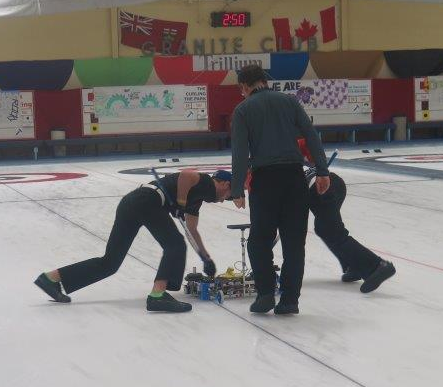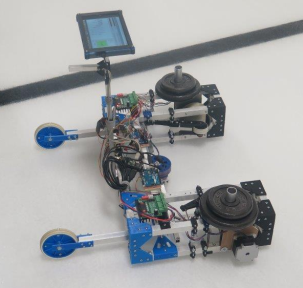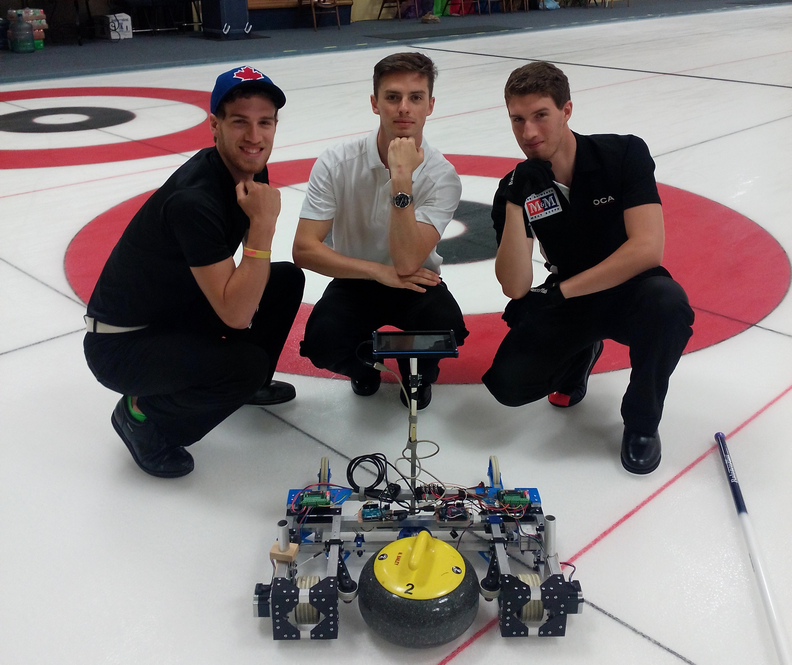Update: SweepTracker now has two modes, can be used to measure the effect of sweeping on curl
Also excellent for matching rocks *
Curling’s broom/sweeping controversy has significantly increased the interest in the effect of sweeping and equipment on the curl of the rock. SweepTracker now has a “rock launching mode” which consistently launches rocks at controlled speeds, directions, and rotations to allow for comparison of the effects of different techniques.
This video clip shows a rock number 2 launched after rock number 1, with the second rock following the exact same path (curl and distance) as the first. Click below to play the video:
This second video shows a different set of rock launches. Rocks 1 and 2 were launched, and went down the same paths as in the first video, sitting closer to the button. Rock 3 curled considerably more than Rocks 1 and 2. Rock 4, shown being launched in the video, ends up between the previous rocks. (This illustrates another use for the rock launching mode, to match rocks.*)
With this type of consistency, we can launch a “reference” rock, record where it lands, then sweep another rock (or the same rock) and measure the difference in distance and curl.
So what about sweeping? Here are three closely matched rocks, one reference, and two swept with a synthetic head. Note that even though the sweeping is occurring from the high side, the rock does what we used to always used to expect – it travels straigher and further.
Now with a hair broom…
We have worked with several teams on evaluating the new sweeping techniques, and can tell you they do make a difference. SweepTracker allows you to see exactly how much difference, and to tune your sweeping style for maximum effectiveness. Contact us to work with your team.
More videos coming soon…
* Matching rocks
We now are offering very reasonably priced rock matching services, starting at $479 for four sheets at a club in the Greater Toronto Area. Contact us for a price for your club.
Measuring sweeping effectiveness has been considered from many angles over the years: infrared cameras to measure temperature change and brooms that measure pressure and sweeping speed are two attempts. But up until now, no one has directly measured the change in friction – something that can only be done by measuring the force required to keep the rock moving at a constant speed. SweepTracker is a motorized, battery powered device that cradles the rock and pushes it over the ice while measuring the force. It has a separate motor to keep the rock rotating. As it runs, it provides both audio and visual feedback of the effect of sweeping. Initial plans – as SweepTracker is being refined – is to offer sweeping clinics where teams can bring equipment and try different techniques to find which is their most effective approach. More information as it is available will be posted here.



Example display from SweepTracker where two sweepers started sweeping at about 4 seconds, and stopped sweeping at about 13 seconds. Note the significant change in measured friction:

SweepTracker undergoing tests with the Ontario Under 21 Men’s champion team: Morgan Calwell, Kurt Armstrong, and Mac Calwell.


